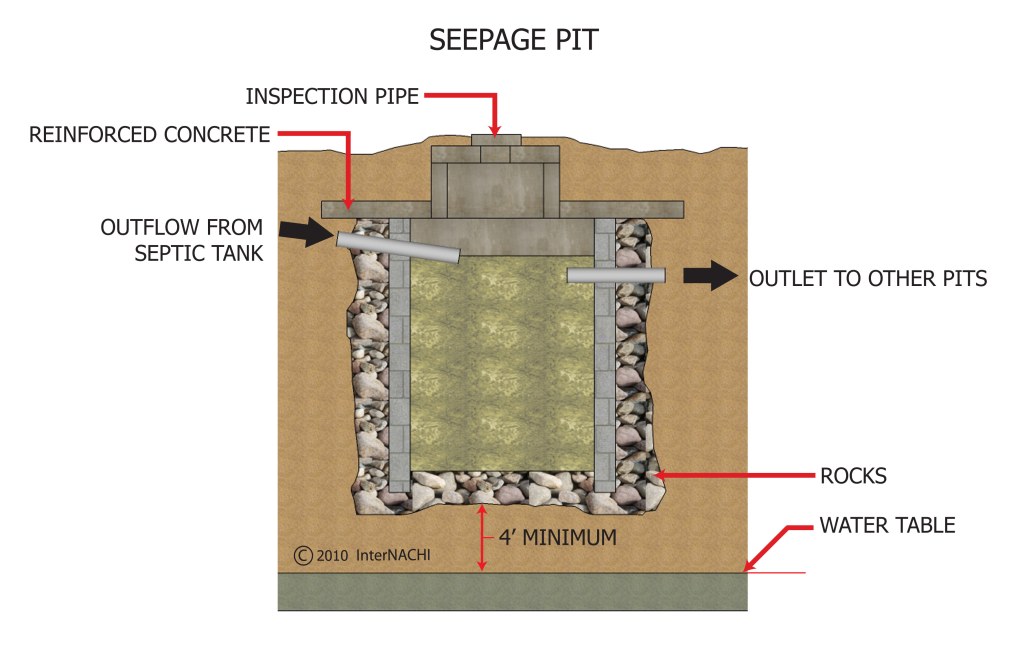Revolutionary Solution For Septic Tank Seepage Pit – Unveiling The Ultimate CTA
Septic Tank Seepage Pit: A Sustainable Solution for Wastewater Treatment
Introduction
Hello, Pit Walk Enthusiast! Are you looking for an eco-friendly and efficient way to treat wastewater? Look no further than the septic tank seepage pit. In this article, we will explore the ins and outs of septic tank seepage pits, their benefits, and how they contribute to a sustainable future.
1 Picture Gallery: Revolutionary Solution For Septic Tank Seepage Pit – Unveiling The Ultimate CTA

What is a Septic Tank Seepage Pit?
A septic tank seepage pit, also known as a leach pit, is an underground wastewater treatment system that utilizes natural processes to filter and purify liquid waste. It consists of a large hole or pit filled with gravel or crushed stone, which acts as a natural filter medium.
How Does It Work?

Image Source: cloudinary.com
When wastewater from toilets, showers, sinks, and other household sources enters the septic tank, solids settle at the bottom, forming sludge, while lighter materials float to the top, forming scum. The liquid portion, known as effluent, flows into the seepage pit through pipes connected to the tank.
As the effluent percolates through the gravel or crushed stone in the seepage pit, naturally occurring bacteria and microorganisms break down harmful pathogens and organic matter. This biological treatment process results in the purification of the wastewater, making it safe for the surrounding environment.
Who Can Benefit from a Septic Tank Seepage Pit?
Septic tank seepage pits are a viable solution for both residential and commercial properties that are not connected to a centralized sewer system. They are commonly used in rural areas, campsites, parks, and other remote locations where traditional sewer connections are not feasible.
Residential Use
For homeowners, a septic tank seepage pit provides an efficient and cost-effective method of wastewater treatment. It allows for proper disposal of household wastewater without relying on municipal sewer systems.
Commercial Use
Commercial establishments such as restaurants, hotels, and recreational facilities can also benefit from septic tank seepage pits. These systems ensure that the wastewater generated from these establishments is properly treated and does not pose a threat to the environment.
When Should You Consider Installing a Septic Tank Seepage Pit?
If you are building a new property in an area without access to a centralized sewer system, or if your existing property relies on a failing septic system, it may be time to consider installing a septic tank seepage pit. It is important to consult with a professional to determine the suitability and feasibility of this wastewater treatment solution for your specific needs.
Where Can You Install a Septic Tank Seepage Pit?
Septic tank seepage pits should be strategically located to ensure proper function and prevent contamination of groundwater sources. Factors such as soil composition, water table levels, and distance from wells or water bodies should be considered during the installation process.
Why Choose a Septic Tank Seepage Pit?
There are several reasons why a septic tank seepage pit is a sustainable and practical choice for wastewater treatment:
Environmentally Friendly
A septic tank seepage pit relies on natural processes to treat wastewater, minimizing the need for chemicals and energy-intensive treatment methods. It reduces the environmental impact associated with conventional wastewater treatment systems.
Cost-Effective
The installation and maintenance costs of a septic tank seepage pit are generally lower compared to connecting to a centralized sewer system. Once installed, these systems require minimal maintenance and can last for several years with proper care.
Reduced Water Pollution
By effectively treating wastewater on-site, septic tank seepage pits prevent the release of untreated sewage into water bodies, reducing the risk of water pollution. This protects the health of aquatic ecosystems and ensures the safety of recreational water activities.
How to Maintain a Septic Tank Seepage Pit?
To ensure the optimal performance and longevity of your septic tank seepage pit, regular maintenance is essential. Here are some key maintenance tasks:
Pumping
Periodically, the septic tank should be pumped to remove accumulated solids and sludge. This prevents clogging and maintains the efficiency of the seepage pit.
Inspections
Regular inspections of the septic tank and seepage pit should be conducted to identify any signs of damage or malfunction. Any necessary repairs or replacements should be promptly addressed to prevent further issues.
Water Conservation
Conserving water can significantly reduce the load on the septic system. Implement water-saving practices such as installing low-flow fixtures, fixing leaks, and spreading out water usage throughout the day.
FAQs
1. Can a septic tank seepage pit handle a large volume of wastewater?
Yes, septic tank seepage pits can handle a significant amount of wastewater. However, it is crucial to properly size the system according to the estimated wastewater flow to ensure optimal performance.
2. How often should a septic tank seepage pit be pumped?
The frequency of septic tank pumping depends on various factors, including the tank size, number of occupants, and wastewater volume. As a general guideline, it is recommended to pump the septic tank every 3-5 years.
3. Can a septic tank seepage pit be installed in any soil type?
While septic tank seepage pits can function in various soil types, certain soil conditions such as high clay content or a high water table may require additional measures, such as soil amendments or raising the elevation of the pit.
4. Are septic tank seepage pits legal?
The legality of septic tank seepage pits varies depending on local regulations and zoning ordinances. It is important to check with the relevant authorities and obtain any necessary permits before installing a septic tank seepage pit.
5. Can a septic tank seepage pit emit odors?
In a properly functioning septic tank seepage pit, odors should not be noticeable. Foul odors may indicate a problem with the system, such as a clog or an issue with ventilation. It is advisable to have a professional inspect and address any odor-related concerns.
Conclusion
In conclusion, septic tank seepage pits offer a sustainable and efficient solution for wastewater treatment. From residential properties to commercial establishments, these systems provide an eco-friendly alternative to centralized sewer systems. By properly maintaining and utilizing septic tank seepage pits, we can contribute to a cleaner environment and a greener future.
Final Remarks
Installing and maintaining a septic tank seepage pit requires careful consideration and adherence to local regulations. It is important to consult with professionals to ensure proper system design, installation, and maintenance. This article provides general information about septic tank seepage pits, but it is crucial to seek personalized advice for your specific needs and location.
This post topic: Pit



